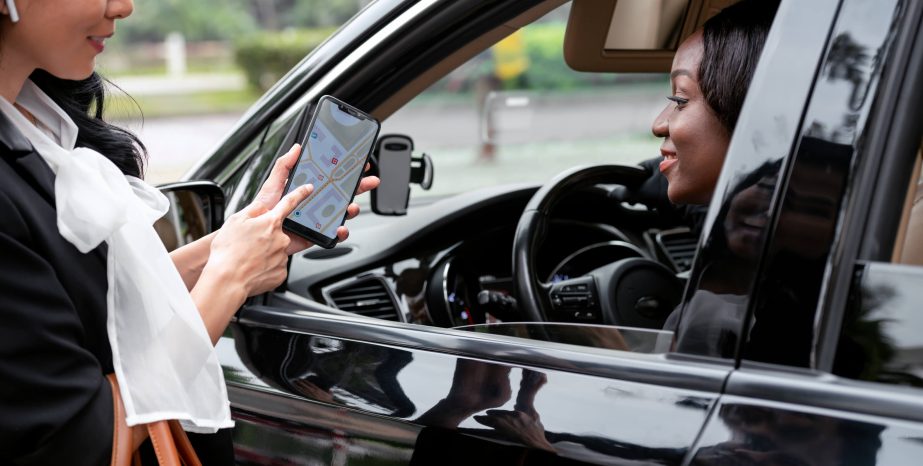
What Causes Most Rideshare Crashes?
A few rideshare collisions are wrong-pace-at-the-wrong-time accidents. These motorists cover a lot of territory. However, driver negligence substantially causes most rideshare collisions. A few common rideshare-related driver errors are outlined below.
The duty of care, the foundation of a negligence claim, is based on the story of the Good Samaritan. Drivers must go out of their way to avoid accidents, just like this man went out of his way to help a neighbor. Individual drivers are responsible for the wrecks they cause. The tortfeasor’s (negligent driver’s) employer is financially responsible for the damages these wrecks cause, at least in most cases.
Uber, Lyft, and other ridesharing companies are subject to the respondeat superior rule. This legal doctrine holds employers responsible for damages if their employees are negligent within the course and scope of their employment. Other employer liability theories, which usually apply to assault, false imprisonment (locking the door and refusing to let a passenger out), and other intentional tort cases include negligent supervision and negligent hiring.
Almost anyone with a valid driver’s license is eligible to be a ridesharing driver. All these underqualified drivers cause many wrecks. When that happens, Los Angeles Ridesharing Accident Attorneys can obtain compensation for economic losses, such as medical bills, and noneconomic losses, such as pain and suffering.
Uncovering the Leading Causes of Rideshare Accidents
Uber and Lyft require drivers to use GPS navigation devices. They strictly enforce this requirement. These companies also require drivers to use these devices in hands-free mode. They don’t strictly enforce that requirement.
The dangers of using hand-held cell phones while driving have been well-documented. These devices combine all three forms of distracted driving, which are:
- Visual (eyes off the road),
- Cognitive (mind off driving), and
- Manual (hand off the wheel).
As dangerous as these devices are, hands-free gadgets maybe even worse. Some people equate “hands-free” with “risk-free.” So, they take risky chances while driving. Additionally, these devices are cognitively and visually distracting. Altogether, driving while using a hands-free device is as dangerous as driving drunk.
Using a hand-held cell phone while driving violates California’s hands-free law. If emergency responders issue a citation for a hands-free violation or other safety infraction, and that violation substantially causes injury, a Los Angeles Uber & Lyft Accident Lawyer can establish negligence as a matter of law.
Operator Fatigue
Speaking of non-drunk drunk driving, operating a motor vehicle after eighteen consecutive awake hours is like driving with a .05 BAC level, which is above the legal limit for commercial drivers, such as Uber drivers, in California.
The number of fatigue-related wrecks is probably under-reported in California. Many local law enforcement investigators don’t have a code for drowsy driving crashes.
Fatigue, like alcohol, clouds judgment and impairs motor skills. The duty of care, which was mentioned above, requires drivers to be at their best when they get behind the wheel. Drowsy drivers clearly breach their duty of care.
The similarities don’t end there. Only time cures alcohol impairment, and only sleep fixes severe fatigue. Quick fixes, like drinking coffee or eating candy, simply make people feel more alert for a little while. Caffeine and sugar often do more harm than good. When these substances wear off, the users typically crash fast and hard.
Aggressive Driving
Uber and other companies usually pay drivers by the ride, not by the hour. That arrangement encourages speeding and other aggressive driving. Speed is a primary or contributing factor in about a third of the fatal car crashes in SoCal.
Excessive velocity increases the risk of a collision. A moving car doesn’t stop on a dime. It only takes a second or two for a driver to see a hazard, apply the brakes, and safely stop the vehicle. In those few moments, at 30mph, most cars surge forward six car lengths. At 60mph, stopping distance triples to eighteen car lengths.
Environmental conditions, such as wet roads, and vehicle conditions, such as vehicle weight, could increase stopping distance even further.
Additionally, according to Isaac Newton’s Second Law of Motion, speed multiples the force in a collision between two objects. In this context, speed transforms non-injury “fender bender” crashes into serious or catastrophic (life-threatening) injury collisions.
Contact Our LA Rideshare Accident Lawyers Today!
The convenience of ridesharing comes at a cost. For a free consultation with Uber Accident Lawyer and Lyft Attorneys in Los Angeles, contact the Law Offices of Eslamboly Hakim. The sooner you reach out to us, the sooner we start working for you.
Sharona Hakim
Sharona Eslamboly Hakim, Esq. is a successful personal injury attorney and the principal of the Law Offices of Eslamboly Hakim firm in Beverly Hills, California.








